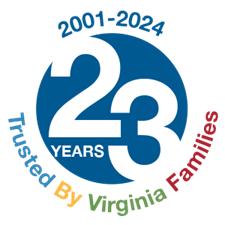About 600,000 older adults stop driving each year, according to USAging, the national association for Area Agencies on Aging. That can make it harder for aging or ill loved ones to make doctor's appointments, shop for necessities, visit family or attend social events. That, in turn, increases their isolation, which negatively affects health and well-being.
Transportation is often a major responsibility for caregivers. More than 40 percent of older and disabled adults rely on family, friends and neighbors for rides, and around three-quarters of caregivers list providing or arranging transport as one of their primary duties, according to a 2021 survey by the National Aging and Disability Transportation Center (NADTC), a program administered by USAging and Easterseals that promotes accessible transit.
But providing transportation is not always easy or convenient. “Some family caregivers just can't leave their job every time somebody needs a ride to the doctor, much less even to the grocery store,” says Virginia Dize, a USAging program director and codirector of the NADTC.
Finding alternatives for times you can't get your loved one where they need to go likely will require some research. But a variety of options are available that can lessen the burden on caregivers and help older and disabled people keep appointments and stay socially connected.
When you can't provide a ride
The types of transit available differ widely from location to location, as do opportunities for specialized or discount service.
Metropolitan areas tend to be transportation-rich, with public bus, rail or trolley lines and various commercial options. In small towns and rural regions, you might have to rely on prebooked “demand response” services or volunteer organizations.
In a joint publication on transportation options, NADTC and Eldercare Locator, a federal directory of local services for older adults, list several programs and services geared in varying degrees to helping older and disabled people get around. Remember that not all of these options are available everywhere, but your area is likely to feature at least some.
Public transit. Primarily bus and rail services, operated and financed by federal, state and local governments, with fixed routes and set schedules, these systems usually offer discounted fares for older adults and people with disabilities. Vouchers may be available as well.
Some transit agencies and local aging or disability organizations provide free training to help riders learn to travel safely. Buses, railcars and stations usually will have accessibility features, but public transit might not be a suitable alternative for people who will have difficulty navigating stairs, waiting outside or walking to and from stops.
Paratransit. Public transit agencies are required by law to provide “complementary paratransit service” for people who are unable to use regular lines. Paratransit operates during the same hours as normal service and covers comparable routes.
Riders must meet eligibility criteria set out in the federal Americans With Disabilities Act (ADA). Vehicles typically are vans outfitted for accessibility.
Trips should be scheduled at least a day in advance and generally are shared with other passengers who have booked similar times. Paratransit providers typically have a 30-minute pickup window, from 15 minutes before to 15 minutes after the scheduled time, so riders need to be ready and waiting at least 15 minutes early.
Demand response. Sometimes called Dial-a-Ride, demand response is another shared-ride service, carrying multiple passengers who book individually with different pickup points and destinations. Reservations usually must be made at least 24 hours in advance, online or by phone.
Taxis. Some communities require locally licensed taxi fleets to include accessible vehicles. They also may offer taxi vouchers to older and disabled riders.
Ride-hailing. Ride-hailing companies such as Lyft and Uber connect passengers with drivers who provide point-to-point transportation in their own vehicles. Booking and payment are typically done via mobile apps.
In some cities, riders can request wheelchair assistance as part of their booking, and the companies have expanded accessibility efforts in recent years. The Uber Assist program trains drivers to accommodate passengers who have mobility issues and use wheelchairs, walkers or scooters. Lyft and United Way teamed up to provide free rides and deliveries through the 211 phone service in select locations for people who have difficulty using public transit.
Users who don’t have a mobile device or aren’t comfortable using apps can request rides via the Lyft and Uber websites. Uber riders with a mobile phone also have the option to call 833-USE-UBER, 833-873-8237, to request a ride without using the app. Uber agents are available in English or Spanish 4 a.m. to 10 p.m. ET nationwide. Landlines can't be used because trips are confirmed by text message.
Another phone option is GoGoGrandparent, a subscription service that lets you book Uber and Lyft rides by cellphone or landline call. Membership starts at $14.99 a month.
In addition, members pay fees for processing and monitoring rides from request to drop-off plus the fare of the ride-hailing service. Members can also call in at 855-464-6872 to arrange meal and grocery delivery and other services from online providers such as DoorDash, GrubHub and Instacart.
Nonemergency medical transportation. NEMT, as it's known, is a Medicaid benefit that covers travel to medical appointments. Private insurance, including some Medicare Advantage plans, also may cover non-emergency medical transit; check with your provider.
Eligibility rules, types of destinations and allowable modes of transport vary from state to state. Taxis, wheelchair vans or vehicles dispatched by specialty brokers or community groups often provide the service, but a growing number of insurers and state Medicaid programs are covering Lyft and Uber rides.
Volunteer programs. Some nonprofit and faith-based organizations offer transportation for medical appointments or other destinations. This might include “door-to-door” or “door-through-door” service for passengers who need someone to help them get in and out of cars and buildings, or stay with them throughout the trip.
Volunteer drivers provide rides in their own cars or agency-owned vehicles. They should undergo training and a background check. Trips are usually prearranged and may require a small fee.
How to find transit options
Transportation information rarely comes from a single go-to source, although emerging strategies in public transit aim to fill that gap. Some local and regional transit organizations have developed “one-call/one-click” centers or "mobility management" programs to help people quickly find, assess and even book transportation services online or by phone.
Caregiver support programs, elder care and social service agencies, and family and friends can also be good resources.
"Do a little exploration in the community about what's available, so that even before you need the service, you know what's available,” Dize says.
Here are some ways to start your search:
Use the Eldercare Locator. “Transportation is consistently the number-one reason people call the Eldercare Locator,” says Joellen Leavelle, communications director for n4a.
The website, operated by the federal government's Administration for Community Living, can direct you to the nearest Area Agency on Aging for information and referrals on transit options.
You can also access the Eldercare Locator by phone at 800-677-1116.
Find a mobility manager. Mobility managers work with communities to develop coordinated transportation programs and help individual customers, particularly older, disabled and low-income people, navigate the range of transit options in their area.
Your local public transit agency, Area Agency on Aging or Center for Independent Living (CIL) can connect you with a mobility manager if one serves your area. The National Center for Mobility Management has an online directory of state and regional programs.
Dial 211. The 211 shortened phone number is reserved for callers to get information and referrals for health and social services in their community, including transportation and other support for older and disabled Americans.
The 211 service is available in all 50 states, Puerto Rico and the District of Columbia and reaches 94.6 percent of the U.S. population.
United Way chapters operate and finance most call centers. You can get more information on 211 and find your local service at 211.org.
Transit options: What to ask
Whether you are exploring options for yourself or a loved one, not all transportation solutions are created equal. Consider these variables in weighing programs and services:
- Availability. What are the hours or days of service? Are rides available evenings, weekends or holidays?
- Eligibility. Does using the service have age, disability, income or mobility criteria? Do veterans have transit benefits?
- Scheduling. Do you need to reserve ahead or can you book on demand? Via app, phone or website?
- Service area and trip type. Is service limited to a defined geographic area or type of trip, for example, medical appointments?
- Accommodation and assistance. Is the service curb to curb — just pickup and drop-off? Door to door? Can passengers get help getting in and out of vehicles and buildings? Can vehicles accommodate a walker, wheelchair or other device?
- Cost and payment. How much is the fare? Are discounts or vouchers for older and disabled riders available? Does Medicaid or insurance cover the trip?
- Driver credentials. Are drivers required to receive training or special licenses? Are they required to pass background checks?
AARP was founded in 1958 and has over 38 million members. It is a nonprofit, nonpartisan organization for people over the age of 50. AARP is well-known for its advocacy efforts, providing its members with important information, products and services that enhance quality of life as they age. They also promote community service and keep members and the public informed on issues relating to the over 50 age group.

